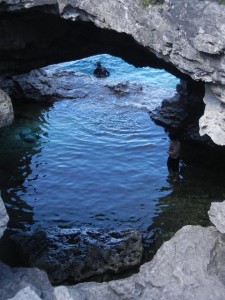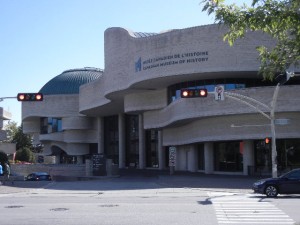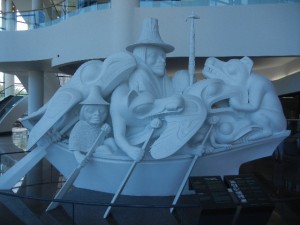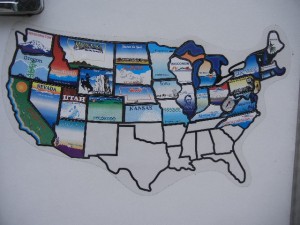31 August-1 September: From Upper Michigan, we crossed into Ontario at Sault Ste. Marie and drove eastward in flat terrain north of Lake Huron to Chutes Provincial Park. This park was named for the chutes built by logging companies in the late 1800s to float their logs down the steep sections of river valleys, passing rapids and falls that would have obstructed the log drives. A short and scenic hiking trail took us from the campground up one bank of the Aux Sables River and down the opposite bank, past numerous rapids and falls. We noticed a ravine to one side of the trail that looked as if it had been cut through the bedrock. It occurred to Amy that maybe it was the route of one of the old logging chutes. Sure enough, a closer look revealed a nearby water inlet structure in line with it, and it was headed toward a gentle slope leading toward a pool at the base of a large set of rapids, so although there was no identification sign, it was undoubtedly the route of a logging chute from about a century ago.



We next drove over a causeway onto the world’s largest island in a freshwater lake, Manitoulin Island. There we hiked the Cup and Saucer Trail, which climbs up onto and along the rim of vertical cliffs that are part of the Manitoulin extension of the Niagara Escarpment. This is a very popular trail that was closed by the landowner in early May, but fortunately re-opened less than a month later after the trailhead had been relocated to a new parking lot. There are ladders on a few of the steeper sections of the trail. Most hikers apparently go only as far as the East Overlook, because we didn’t see anyone while we hiked a loop farther south along the Escarpment.






















